How To Make A Camera Effect On Gimp
Gimp Tutorial: Lomo effect
How to use Gimp to simulate a Lomo picture show. In this tutorial we'll recreate Lomography: loftier saturation, low dynamic range and vignetting with Gimp.

In this Gimp tutorial we will recreate the Lomography. Lomo is a school of thought every bit well as a photographic technique. At that place are ten "Golden Rules" (that are listed at the end of the tutorial), merely the motto is only ane: "Don't think! Just Shoot". Lomography originated in the nineties, when two Austrian students constitute some 35 mm compact cameras of a brand called Lomo in a flea market place. The proper noun is an acronym that identifies the identify of origin: "Leningradskoe Optiko-Mechaničeskoe Obedinenie". The special features of this meaty photographic camera are independent in the lens: designed by a Soviet optical engineer, with a 32mm focal length (medium wide bending) and with a relative brightness of f/2.8, which, combined with the pocket-size size of the lens, provides extremely saturated images and underexposed vignetting all around. A sort of "tunnel" effect. Gimp allows you lot to easily simulate a Lomo flick, with few steps. Even if the real lomography needs the utilise of traditional cameras with films, we thing information technology could exist a good idea to write a tutorial for a credible lomo outcome simulation with Gimp for digital pictures.

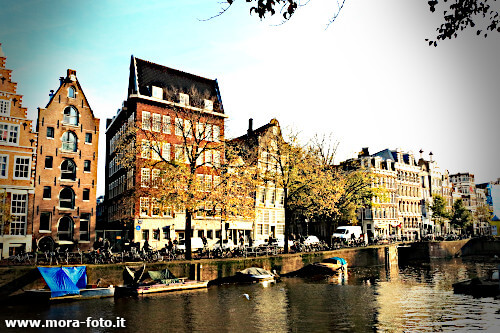
Is really difficult to write the perfect Lomography tutorial for Gimp, because at that place are many different means to get a credible Lomo picture, I suggest you to read this tutorial only as an inspiration. For better results I advise yous to shoot with unusual settings: You could overexpose, modify colour balance to the farthermost, use fisheye lenses, add noise, exaggerate the contrast... annihilation you lot want.
Continues after the advertising...
In that location are a couple of thing that y'all should consider earlier proceed:
- The simply mandatory step is the improver of vignetting. The lens of a Lomo photographic camera is very vivid and wide (32mm f/two.8) and the vignetting is ever present
- It could be a good idea to enhance the primary colour of the scene: in this tutorial I'll increased the yellow, just if your photo is mainly green (for instance a meadow or a park), you should enhance the green tones, but y'all tin can also practise the reverse
- Use only wide lenses, don't use zoom. Utilise the smaller Aperture (f/value) that you can
- Don't think besides much when y'all shoot, the best results are with crooked/unusual photos
Open up the photograph that you desire to transform in a Lomo photograph, then change the colour tone of the picture show: go to Colors → Color Temperature and prepare the values that you like.
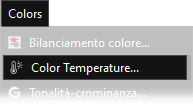

Now nosotros have to give more crispy details to the lomography: open Filters → Enhance → Sharpen (Unsharp mask) and gear up the parameters as you similar, I've left the default values.
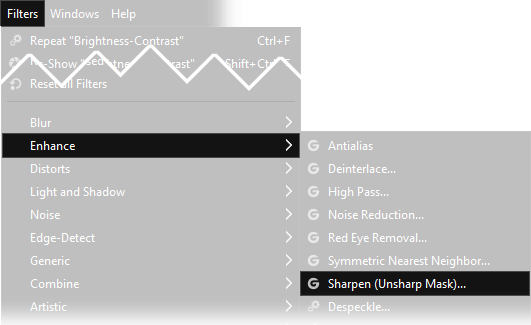
At present nosotros demand to brighten and increase the contrast: open up Colors → Effulgence-Dissimilarity and so increase Effulgence to +35, and Contrast to +30. We need to simulate the high contrast and low dynamic range of the Lomo.
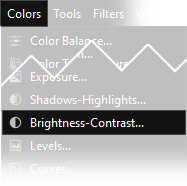

Use the Ellipse Select Tool to draw a circle selection like the one in the following image (Hold the Shift button on the keyboard while drawing the ellipse, to get a perfect circle). Read the tutorial about Gimp'southward selections and masks if you don't know what an Ellipse option is and how to utilize it.
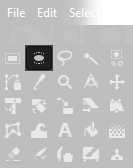

Continues afterwards the advertising...
Feather the choice past clicking on Select → Feather.. and choose a large value: a correct corporeality could be 600 px for high resoluton images, and so invert the choice going to Option → Invert.
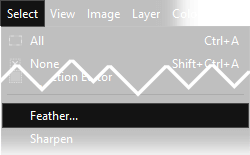

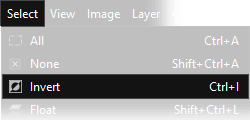
At present we demand to reduce brightness: open Colors → Brightness-Contrast then reduce Brightness to -127. We need to darken the vignetting.


This was the last step of my Lomo photography tutorial for Gimp, side by side y'all can see the photograph before and after the lomo effect. If yous liked Lomo Effect, you tin can also be interested in the Cross Processing tutorial for Gimp. To conclude, iii examples of real Lomo photographs (under artistic mutual license) and the Lomography poster:

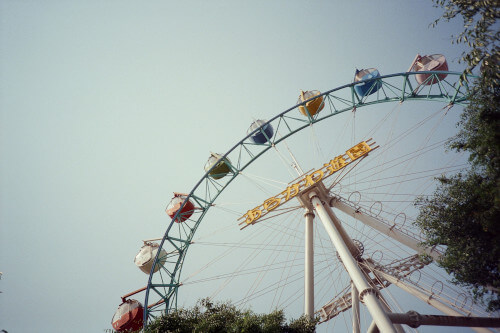
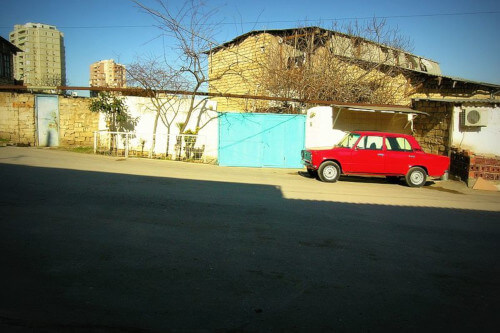
The Lomo photography poster:
- Take your camera everywhere you go
- Apply it any time - 24-hour interval and night
- Lomography is not an interference in your life, but office of information technology
- Endeavour the shot from the hip
- Approach the objects of your Lomographic desire as close every bit possible
- Don't think! Just Shoot (also the ideology of Lomography)
- Be fast
- Yous don't have to know beforehand what you captured on film
- Afterwards either
- Don't worry almost whatsoever rules


If yous liked this tutorial the tutorials we have written for improving your photographs with Gimp, or you can all the guides we have written about photography. If you liked our work, you could consider to ❤support us: by clicking here you lot can meet how.
If you appreciate our piece of work and y'all'd like to offering us a coffee: 

bc1qtku7wwm25w85cagfkd0yvr5l98h3d52w69zsfe
The use of the tutorials, for not-commercial purposes, is allowed merely if y'all add a "dofollow" link to this website.
Cookies, privacy and ©
Source: https://www.mora-foto.it/en/tutorials-gimp/simulate-lomography.html
Posted by: gregoryleighte47.blogspot.com

0 Response to "How To Make A Camera Effect On Gimp"
Post a Comment